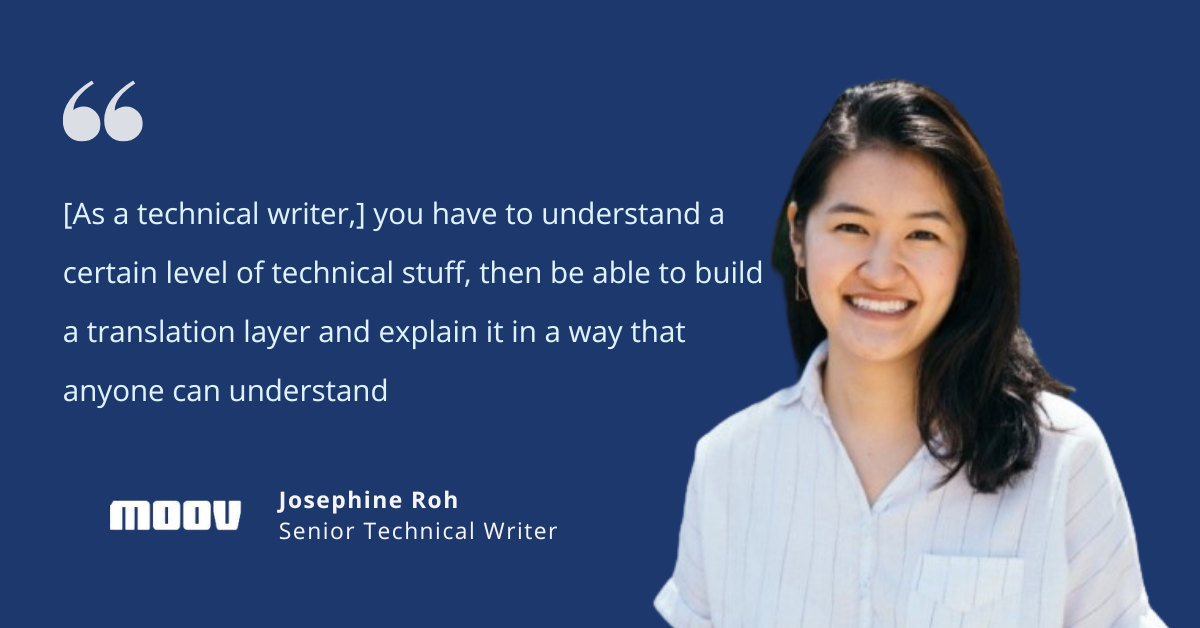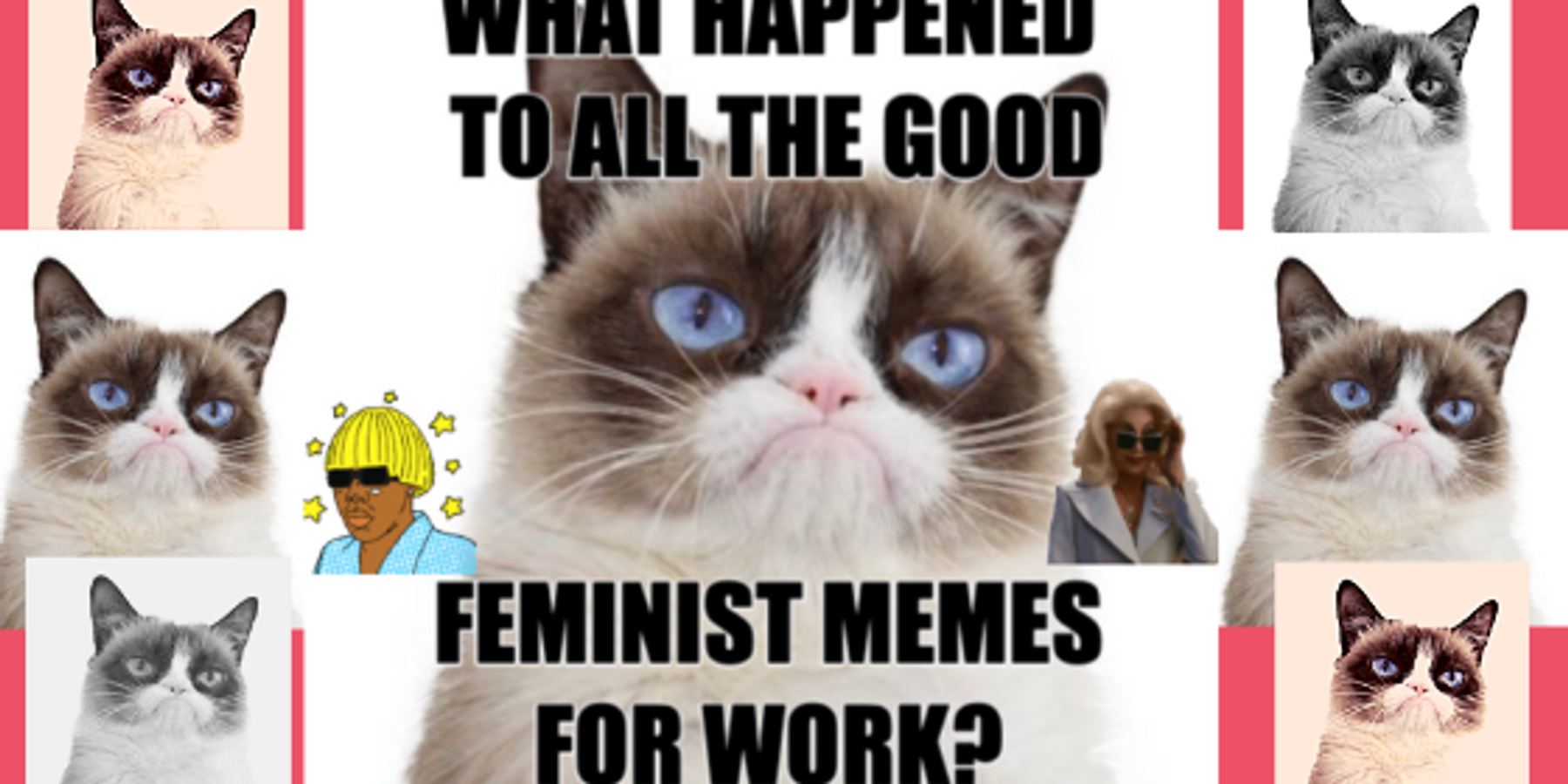Josephine Roh loves brunch. Particularly hosting it — and bringing special dishes to life to share with her friends.
The latest recipe she’s mastered is for lemon ricotta pancakes.
Cooking is part art and part science, which might be why the senior technical writer for fintech platform Moov is such a big fan of it.
“I’ve always liked using both sides of my brain,” says Josephine, who studied English literature in college, in line with her right-brain strengths, but also added an economics major to sharpen the analytical left side of her brain. She credits this double-barreled approach with setting her up well for her current career.
“It prepared me to be a holistically well-rounded person when it comes to how I think and work,” she says.
We sat down with Josephine to hear more about how she found her way into a career in technical writing, as well as the tips and tricks she has for people interested in following in her footsteps.
A Career Exploration
Josephine started her tech career in customer success at an edtech startup. “It was great training because at a startup you wear lots of hats,” she recalls, noting experiences in user research and operations. After trying a more quantitative-heavy role that gave her exposure to fintech, she realized she wanted something more creative, with an innovative, distributed company.
That’s how she found Moov.
“I was looking for a place with a remote-first culture, and Moov stood out. Some places were hybrid, or said, ‘Maybe we’ll go back to the office,’ but Moov originated without an office and intended to stay that way,” she says. “But I didn’t want it to just be remote — I also wanted it to be very human.”
To Josephine, that meant a culture of coworkers getting to know each other, respecting each other, and caring about each other — which is how she’s experienced Moov’s culture.
“There’s a lot of mutual understanding,” she says. “Something kind of sweet Moov does is this monthly “unbemoovable” meeting where someone shares their story, with pictures, to the extent that they want to. We’ve heard a lot of nontraditional, exciting stories, including from career switchers, and it lends itself to an angle of diversity and creativity that feels like a very healthy, human-first culture.”
Her first few months on the job were spent learning about the product, coming up the curve on technical writing, and pulling together documentation. After finishing the first set of docs, Josephine decided to start focusing on making Moov’s documentation better.
Her manager saw and appreciated Josephine’s initiative and promoted her to senior technical writer, which made her feel like she had chosen the right environment for her growth.
“Moov has let me run with this, building our docs from the ground up because there wasn’t red tape. There weren’t people standing in my way saying, ‘No, this is not how you do it.’ Me being comfortable with that ambiguity and trusting that people like my manager were supporting me, allowed me to be able to grow in my career to where I am now,” she says.
Technical Writing: An Intro and 5 Tips
Josephine explains what technical writing is by referencing a multi-layered puzzle. “You have to understand a certain level of technical stuff, then be able to build a translation layer and explain it in a way that anyone can understand,” she says.
“It’s about writing guides and documents that help developers implement or integrate with different software. It requires some level of knowledge of how developers think and speak, as well as the tools that they're going to be using to make things happen.” That can take the form of API-heavy reference documents, which are more technical, or more “prose-y guides” that explain more holistically what a feature is and how to use it.
Here’s what Josephine recommends to others interested in the field:
- Make sure you have the right skill set. “Tech writing is good for folks who like writing, and don't mind writing about things that they don't yet understand, who are comfortable with ambiguity or diving into the challenge of learning something new and very specific.” Other key skills, per Josephine: interviewing, talking to people, process management, research, relationship building, editing, writing (duh!), and empathy (to imagine the final product from different audiences’ points of view).
- Brush up on key tools. “I’d recommend that future tech writers learn the suite of tools they’d work with. It’s almost imperative that you would know Markdown, which is kind of like HTML, but it's the language that formats text. It’s what most tech writers type in, basically. It would be good to know how API references are generated, too, and also helpful to know how to work with GitHub.”
- Interview other tech writers! “People are super open to talking about their experiences and because it's different at every company, you may want to get a more holistic perspective and talk to a couple of people. The company really makes or breaks your experience.”
- Practice, practice, practice. “Look at the world of open source. If you want hands-on experience, look for a project with incomplete documentation and ask the owner if you can help with documenting it!”
- Find communities to learn with. Josephine says that the online technical writing community is active and generous. “There are communities for any question you might have about tech writing, as well as free resources. I definitely recommend them.” As far as specific resources and communities go, Josephine personally suggests the following:
- Google’s Technical Writing Courses
- Git and its own reference documents
- The Product is Docs: Writing technical documentation in a product development group, a book by the Splunk Documentation Team
- The Write The Docs Slack community, with job postings, recommendations, and channels for sharing other resources
If Moov sounds to you like an interesting place to work, check out their open roles!




